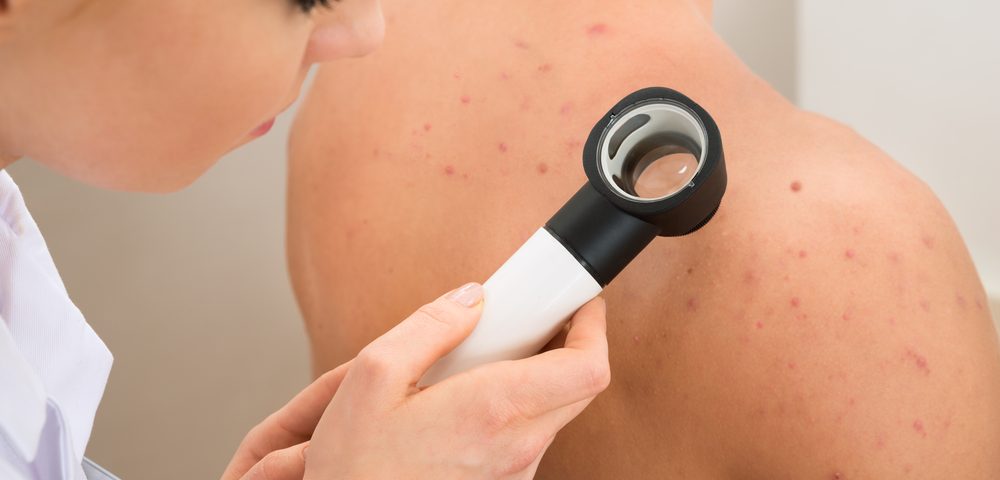A new study from Northwestern Medicine shows the advantages of partners frequently checking for potentially dangerous moles, after receiving training to do so.
The study, “Self-confidence and Embarrassment About Partner-Assisted Skin Self-examination for Melanoma,” published in JAMA Dermatology, shows that participants who receive skin examination training can detect many more mole irregularities in their partners’ skin than those who don’t receive training. In addition, they grow more confident in their observations over time, and their partners also experience less embarrassment.
Patients with melanoma may benefit from partner-assisted skin self-examinations (SSEs) to increase early detection of new melanoma. However, despite the potential positive aspects of including partners in SSEs, some individuals may be embarrassed or feel uncomfortable having a nonprofessional or intimate partner routinely check their bodies.
Common body places to develop potentially deadly melanoma include hard-to-see areas such as behind the ears and knees, the top of the head, and around the swimsuit line on a woman’s bottom.
“These aren’t parts of the body that most females like to have examined by their male partner, but at some point, they realized they’re just looking at the moles, not the cellulite,” June Robinson, MD, study lead author and research professor of dermatology at Northwestern University Feinberg School of Medicine, said in a press release. “We found as long as the benefit is strong enough, it overcomes whatever potential embarrassment there might be between the partners.”
In the new study, the team of researchers assessed patient- and partner-reported levels of embarrassment, comfort, and self-confidence in performing SSEs during a two-year SSE education training program. The researchers recruited 395 individuals who had been diagnosed previously with early stages of melanoma (stage 0 to IIB) and had surgically removed irregular moles. For comparison, the researchers included a control group of 99 participants who did not received the SSE training.
The SSE training consisted of a complete explanation on how to evaluate irregularities in moles from a physician, by reading a handbook, or by listening to exercises. The pairs performed SSEs on one another every month or every couple of months to check for mole irregularities. Each had to score the mole as (1) if the mole looked normal, (2) if they were unsure about the mole looking normal or abnormal, and (3) if the mole looked abnormal.
Every four months, study participants also were asked to indicate how much they agreed or disagreed with the following two sentences “It is very embarrassing to have my partner help examine my skin,” and “I am very comfortable having my partner help examine my skin.”
Study participants who received skin examination training caught far more mole irregularities compared to those in the control group, the researchers found. During the study period, they also had increasing confidence performing the skin examinations.
“In that discussion back and forth, they make a judgment call and agree on it,” said Robinson, who is the editor of JAMA Dermatology. “As they each grow more confident in their decision-making, the trust between them becomes stronger. When the trust is there, there’s no issue with embarrassment.”
The researchers also found that men tend to see mole border irregularities better than women, whereas women tend to see better color variations in the moles.
“The pairs realize, ‘We need to help each other here,'” Robinson said. “If he sees borders better and she sees colors better, those two heads are better than one when finding the irregularities.”
Participants in the study will continue follow-ups every four months for four more years to gauge their progress and levels of embarrassment, comfort, and confidence with partner-assisted SSEs.


